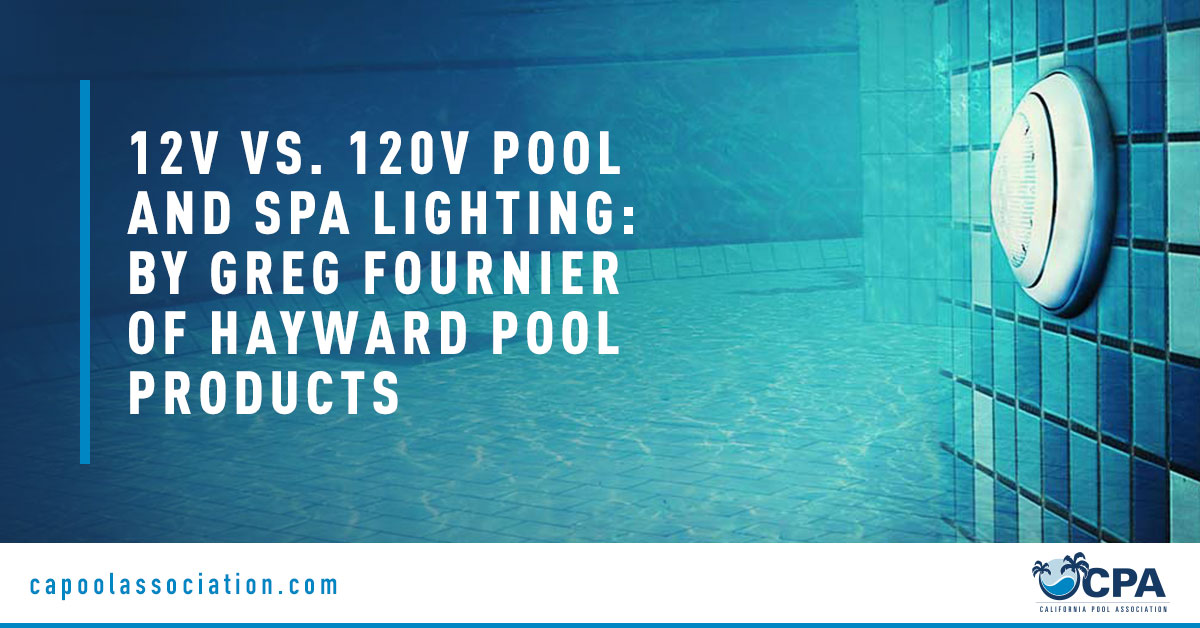
When it comes to swimming pool, spa, and accent lighting, it’s time for industry professionals to take a fresh look at 12-Volt Lighting Systems. Misconceptions surrounding 12V Lighting run rampant with concerns about brightness level, cost, and installation time. In truth, 12V Lighting can be the brightest, safest, most cost and time-effective option you can offer your customers.
A CHANGING SENTIMENT In the past 10 years, lighting manufacturers have raced to expand their lighting lines to include a wide variety of color and white LED options—the majority of which are 12V. This is not only because LED technology is the best on the market when it comes to energy conservation, rich color, and lower total cost of ownership, but because of the all plastic, permanently sealed aspect of many of these lights. Inspectors are becoming better educated about the inherent safety of many 12V models, and in some areas local codes are changing to acknowledge this fact. Overall, industry sentiment is changing as many pool professionals come to understand that all state of the art lights are now only available in 12V.
A WAVERING UNCERTAINTY Topping the list of concerns is the brightness level in pools and spas. The age old wisdom is that more voltage and more wattage equal more brightness. Although there may have been some truth to this in the past, that is no longer the case. 12V LED Lighting broke that paradigm. Firstly, wattage refers to energy consumption, not brightness level, making wattage irrelevant in terms of brightness. Secondly, advancements in LED technology have revolutionized pool and spa lighting with 12V lights now as bright, or brighter, than their 120V counterparts.
Another misconception is that because a 12V light needs a transformer, it must be more expensive. However, this is mostly incorrect. Based on changes to the National Electric Code (NEC), some UL-listed 12V lighting systems may represent installation savings of up to $150 per light by no longer needing to bond and ground the light or include a GFI breaker. Some 12V lights are priced to be competitive with 120V lighting. The best resource for this information is your local manufacturer’s rep or your distributor. Installation time is also a concern. Pool professionals fear that replacing a 120V light for a 12V light will take hours of electrical work. Due to advancements in technology, this is no longer the case. If a pool light already has a junction box, there are UL-listed retrofit kits that are able to switch most mainstream pool lighting from 120V to 12V in just minutes.
A GROWING CONSUMER DEMAND Homeowners expect their pool to be a fun and safe environment. But with national media attention on the recent electrocutions from incorrectly wired 120V pool lighting, this expectation is being challenged. When wired and serviced in accordance with the NEC (National Electric Code), 120V lights have been, and will continue to be safe. However, some 12V systems with transformers are inherently safer than others. Because of their all-plastic, permanently sealed construction, UL has recognized some 12V products as intrinsically safe. Along with the NEC, UL has recognized that the lights in UL-listed all-plastic niches no longer require bonding or grounding. These factors eliminate the risks associated with 120V lighting including a lens being sealed incorrectly, or a light being wired wrong. Many local codes around the country have endorsed low voltage lights for decades, and others are now following suit.
Whether it’s retrofitting one of the 4 million existing pools with white incandescent lights to vibrant color LED’s, or installing accent lights into the steps, shelves or water features of a new build, the move to 12V lighting is accelerating across the nation. 12V lighting is the future. It’s up to you to make sure your customers are outfitted with best, safest and smartest option in pool and spa lighting.
For further information contact:
Monica Archibald
marchibald@haywardnet.com
951-847-0728